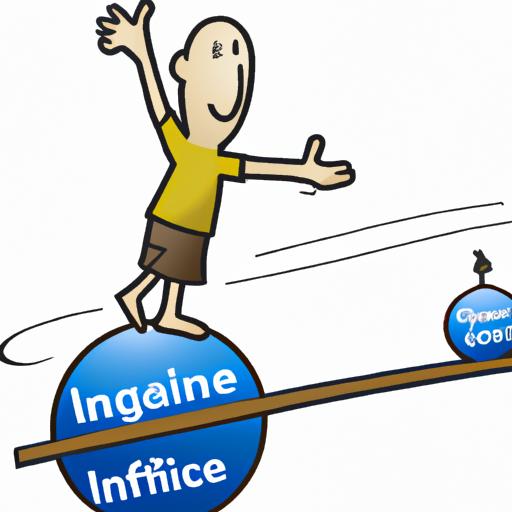Are you looking for a life insurance policy that covers you for your entire lifetime? Look no further than a whole life insurance policy. In this guide, I’ll explain everything you need to know about getting a whole life insurance policy.
Introduction
A whole life insurance policy provides coverage for your entire life, unlike term life insurance, which only provides coverage for a set period. It is a type of permanent life insurance that offers both a death benefit and a cash value component.
Having a whole life insurance policy is crucial for anyone who wants to ensure their loved ones’ financial security in case of their untimely death. It can provide a safety net for your family, paying off debts and expenses and providing ongoing income for your loved ones.
In addition to the death benefit, a whole life insurance policy also has a cash value component that grows over time. This cash value can be used for various purposes, such as paying premiums or taking out a loan.
Overall, a whole life insurance policy is an excellent investment that provides lifelong security and peace of mind. In the following sections, we’ll discuss the steps you need to take to get a whole life insurance policy that fits your needs.
Determine Your Coverage Needs
Before you start shopping for a whole life insurance policy, it’s essential to determine how much coverage you need. Here are some factors to consider when determining your coverage needs.
Factors to Consider When Determining Coverage Needs
- Your age
- Your income
- Your debts
- Your family’s financial needs
- Your retirement plans
- Your health status
- Your lifestyle
How to Calculate the Appropriate Coverage Amount
To calculate the appropriate coverage amount, you can use a simple formula:
- Multiply your annual income by ten.
- Add your debts and final expenses.
- Subtract any assets that can be used to cover expenses.
- The resulting number is the coverage amount you need.
For example, if your annual income is $50,000, you have $20,000 in debts and final expenses, and you have $10,000 in assets that can be used to cover expenses, your coverage amount should be $470,000.
Keep in mind that this is a general formula, and your coverage needs may vary depending on your individual circumstances. It’s always a good idea to consult with a financial advisor or insurance agent to ensure you have the appropriate coverage amount for your needs.
Choosing the Right Type of Whole Life Insurance Policy
When choosing a whole life insurance policy, it’s important to understand the differences between whole life and term life insurance. While term life insurance generally provides coverage for a set period, whole life insurance provides coverage for your entire lifetime, as well as a cash value component that grows over time.
Whole Life vs. Term Life Insurance
Term life insurance is a more affordable option that provides coverage for a specific period, typically between 10 and 30 years. Once the term expires, the policyholder must renew the policy or purchase a new one. Whole life insurance, on the other hand, provides coverage for the policyholder’s entire life and has a cash value component that grows over time.
Types of Whole Life Insurance Policies
There are different types of whole life insurance policies available, including:
Traditional Whole Life Insurance
This is the most common type of whole life insurance, offering a fixed premium, a guaranteed death benefit, and a cash value component that grows at a set rate.
Universal Life Insurance
This type of whole life insurance offers more flexibility in terms of premiums and death benefits. It also has a cash value component that can be invested in various accounts, such as stocks, bonds, and mutual funds.
Variable Life Insurance
Variable life insurance is similar to universal life insurance, but the cash value component is invested in separate accounts that offer different investment options. The policyholder bears the investment risk, and the cash value fluctuates depending on the performance of the underlying investments.
Pros and Cons of Each Type
Each type of whole life insurance policy has its own set of pros and cons. Traditional whole life insurance provides a fixed premium and a guaranteed death benefit, but it may have lower returns than other types of policies. Universal life insurance offers more flexibility, but the investment risk falls on the policyholder. Variable life insurance provides more investment options, but it also has a higher risk.
When choosing a whole life insurance policy, it’s essential to consider your financial goals, risk tolerance, and overall needs. Consult with an insurance professional to determine which type of policy is best for you.
Find a Reputable Insurance Company
When it comes to choosing an insurance provider for your whole life insurance policy, it’s essential to do your research and select a reputable company. Here are some steps you can take to find a reliable insurance company:
Researching and Comparing Insurance Providers
The first step is to research and compare different insurance providers. You can start by searching online for insurance companies that offer whole life insurance policies. Look for companies with a good reputation and a long history of providing quality insurance products.
Once you’ve identified several potential providers, compare their policies, premiums, and other features. Look for policies that offer the coverage you need at a price you can afford. Don’t forget to read the policy documents carefully to understand the terms and conditions.
Check for Financial Stability and Customer Satisfaction
A reliable insurance company should have a strong financial stability rating. You can check the insurer’s financial strength by looking at ratings from independent rating agencies such as A.M. Best, Standard & Poor’s, and Moody’s.
In addition to financial stability, you should also consider the company’s customer satisfaction ratings. Look for reviews online or ask for recommendations from family and friends who have experience with the insurer.
Consider the Company’s Reputation and Track Record
Finally, consider the insurance company’s reputation and track record. Look for a company with a history of providing quality products and excellent customer service. You can also check with your local state insurance department to see if there have been any complaints filed against the insurer.
By taking these steps, you can find a reputable insurance company that provides the coverage you need at a price you can afford. Remember, choosing a reliable insurer is crucial to ensure you and your loved ones’ financial security.
Apply for the Policy
Once you’ve determined your coverage needs and chosen the right type of whole life insurance policy, it’s time to apply for the policy. Here’s what you need to know:
How to Apply for a Whole Life Insurance Policy
The first step is to contact an insurance agent or company and request an application. You can do this either in person, over the phone, or online. Be sure to ask any questions you have about the policy and its features before filling out the application.
The Application Process and Required Documentation
The application will require you to provide personal information, such as your name, age, and address. You will also need to answer questions about your health, lifestyle, and hobbies. Be honest when answering these questions, as any inaccuracies could result in a denied claim.
You may also need to provide additional documentation, such as medical records, financial statements, or proof of income. Your insurance agent will guide you through the application process and let you know what documents are required.
What to Expect During the Underwriting Process
Once you’ve submitted your application and provided all necessary documentation, the insurance company will review your application and determine your eligibility for the policy. This process is called underwriting.
During underwriting, the insurance company will assess your risk level based on factors such as your medical history, family history, and lifestyle. They may also require you to undergo a medical exam or provide additional information.
Once the underwriting process is complete, the insurance company will either approve or deny your application. If approved, they will send you an offer with the premium amount and coverage details. You can accept or decline the offer based on your needs and budget.
In conclusion, applying for a whole life insurance policy can seem daunting, but it’s a crucial step in ensuring your family’s financial security. By following these steps and working with a trusted insurance agent or company, you can get a policy that meets your needs and provides peace of mind.
Conclusion
In conclusion, getting a whole life insurance policy is a crucial step in securing your family’s financial future. It provides lifelong coverage and a cash value component that can be used for various purposes.
To get the right whole life insurance policy, you need to determine your coverage needs, choose the right type of policy, find a reputable insurance company, and apply for the policy.
Make sure to do your research and compare different policies and insurance providers to find the one that best fits your needs and budget. Consider factors such as the company’s financial stability, customer satisfaction, and reputation.
Remember, a whole life insurance policy is an investment that provides lifelong security and peace of mind. By following the steps outlined in this guide, you can get a whole life insurance policy that meets your needs and ensures your loved ones’ financial security.





